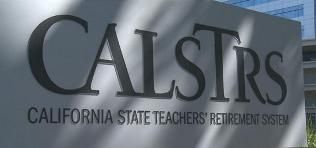Harsh impact of CalSTRS bailout begins to emerge
by Chris Reed | January 2, 2015 6:15 am
 The deal struck in spring 2014 to bail out the underfunded California State Teachers’ Retirement System will lead school districts, the state and teachers to increase their annual contributions to CalSTRS from $5.9 billion in 2014 to at least $10.9 billion in fiscal 2020-21, with 70 percent of the extra billions coming from school districts, 20 percent from the state general fund and 10 percent from teachers.
The deal struck in spring 2014 to bail out the underfunded California State Teachers’ Retirement System will lead school districts, the state and teachers to increase their annual contributions to CalSTRS from $5.9 billion in 2014 to at least $10.9 billion in fiscal 2020-21, with 70 percent of the extra billions coming from school districts, 20 percent from the state general fund and 10 percent from teachers.
School districts preparing long-term budget analyses are beginning to realize what they face. This is from the U-T San Diego[1]:
Administrators say they’re at a loss for how they’ll come up with the cash, which for some districts could be tens of millions per year. …
Some school districts in San Diego County highlighted the sticker shock in so-called “interim midyear” budget reports released this month that show escalating contributions from teachers, school districts and even the state as a way to dig the teachers’ retirement fund out of debt over the next several years.
Administrators said that in the coming fiscal year, they may be faced with tough decisions to cut instructional programs, cut professional development or delay technology infrastructure improvements at the expense of paying their share of unfunded pension liabilities — totaling $74 billion statewide.
Officials in districts throughout California are talking about forming a coalition to explore ways to fix the teacher retirement system without cutting into their own school programs.
Coming: The CTA, CFT ‘sequester’
That coalition is sure to end up seeking refuge in new money from the state general fund. The scenario outlined in Cal Watchdog last May[2] looks more likely than ever:
[We will see] perpetual junkyard-dog budget fights in which the CTA and CFT — determined to grab every last dollar to maintain the status quo of teacher pay raises — fight constantly over funding with every competing lobby or interest group.
Why? Because the bailout is going to cost so much, and in the zero-sum game of state budgeting, the question is whether the cost is absorbed in the larger K-12 state budget — or out of the hides of other state programs. …
The CTA and the CFT didn’t achieve their dominance of Sacramento by playing nice. Covering the cost of the CalSTRS bailout going forward is going to be the Sacramento version of the federal budget sequester for non-education budget categories. Spending on just about everything but K-12 is going to be curtailed.
Of course, we’ll also see redoubled efforts to raise taxes and make “temporary” hikes permanent. But the day in which the Maviglios of the world could pretend the pension crisis was exaggerated or no big deal will soon be history. Pretty soon the pain is going to be shared by all users of California government services and programs outside of K-12.
Pension tsunami? More like wrecking ball
I wrote more about the coming epic budget battles — the war of all against all — here[3]:
Practically everything in district budgets besides employee compensation will take a huge hit, with less money for classrooms, teacher training and to pay off bonds for construction and technology projects.
This is inevitable when 85 percent or more of school district operating budgets already go toward pay and benefits, and a huge new bill comes along. Gary Hamels, a San Marcos Unified official, said “the things you want and need for educational purposes will take a second seat to funding this retirement system, or paying for utility bills.”
The pension crisis has been likened to an oncoming tsunami. With local schools, it will be more like a wrecking ball — even if temporary state sales and income tax hikes are extended.
Happy New Year!
- U-T San Diego: http://www.utsandiego.com/news/2014/dec/28/school-pension-contributions-skyrocket/?#article-copy
- last May: http://calwatchdog.com/2014/05/27/calstrs-bailout-will-be-equivalent-of-sequester-on-other-ca-spending/
- here: http://www.utsandiego.com/news/2014/dec/29/spin-wont-stop-the-pension-wrecking-ball/
Source URL: https://calwatchdog.com/2015/01/02/harsh-impact-of-calstrs-bailout-begins-to-emerge/